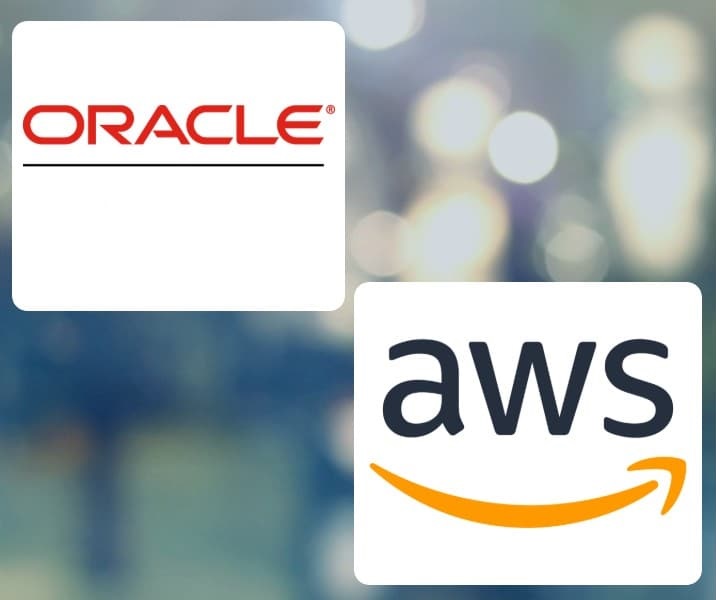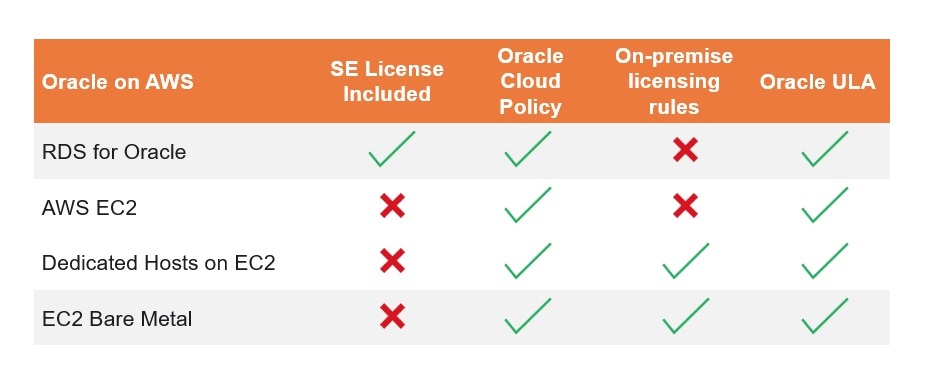This article was published as a part of the Data Science Blogathon.

Introduction
Oracle database assures most of the business requirements, including low RTO (Recovery Time Objective) and RPO (Recovery Point Objective) in case of a failure; hence it is one of the popular choices among businesses. Running Oracle on AWS can reduce administrative burdens and cut operating, licensing, and database maintenance costs. Through AWS RDS (Relational Database Service) and EC2(Elastic Compute Cloud) services, Oracle databases can be managed and maintained efficiently in AWS. Amazon EC2 is a good option if users need complete administrative control, including OS-level access or having a database larger than 80% of the max size in RDS. Amazon RDS can be chosen if users don’t want to purchase a stand-alone license, and there is no need to worry about updates, backup, and recovery. This article covers an overview of Oracle databases, why there is a need to migrate Oracle databases to AWS, running oracle on EC2 and RDS, and Oracle licensing.
Overview of Oracle database
Oracle database, or Oracle, is a Relational Database Management System developed by the Oracle Corporation. The purpose of the database is to store and retrieve related information and to run online transaction processing. Oracle is more scalable than SQL, which can make it more cost-efficient in enterprise instances. It is a market leader with Microsoft SQL Server, SAP HANA, IBM Db2, and other RDBMS. The reason why Oracle Database is a popular choice among business organizations is that Oracle databases can be configured dynamically and accessed quickly without downtime if there is a need for a large number of databases to store data.
Key Features that make Oracle popular
- Cross-platform database, which means it can run on multiple types of servers and across different operating systems, including Windows, Linux, UNIX, and macOS.
- Oracle has its programming language PL/SQL, closely related to SQL and lets users add Oracle programming extensions to SQL.
- Efficient memory caching to ensure the optimal performance of large databases.
- Reliable data management with security measures like strict authentication, data-network encryption, and authorization.
- Scalable due to features like Real Application Clustering and Portability.
- Oracle DB’s RMAN (Recovery Manager) feature can recover and restore the database during downtimes.
Why Oracle databases need to be migrated to AWS
- Higher consistency and reliability when it comes to data in the AWS. The SLAs are met almost every time, and customers can quickly access their data, thus ensuring higher availability.
- Generally, DBAs spend a large amount of time adding storage and capacity planning. But cloud-native and fully-managed databases like Amazon RDS or Aurora allow DBAs to increase storage with no downtime, running on elastic volumes and computing power on demand.
- Able to scale according to the changing demand. Users can use AWS tools, Elastic Load Balancing, and Auto Scaling so that their application can perform optimally.
- Reduce operating, licensing, and database costs, reducing the administrative burden. With AWS, users have to pay only for the resources they use.
- AWS infrastructure has a top-notch security framework. With AWS, users can encrypt their data and maintain total content ownership. It is possible to keep data in a specific format and transfer or delete it irrespective of time.
- Capital expenses for hardware and software can be much reduced with migration. It can reduce the costs of installing, updating, maintaining, and patching databases without the additional administration overhead.
Running Oracle on AWS EC2 and RDS
Source – atatus.com
Users can have two options to run an Oracle database on AWS. They can run it fully managed on the Amazon Relational Database Service (RDS), or they can run it on highly available Amazon Elastic Compute Cloud (Amazon EC2) instances and manage the database themselves.
1. Amazon RDS for Oracle
AWS RDS has many different database platforms that are supported, including Oracle. RDS is the easiest way to set up, operate, and scale a highly available Oracle Database in the cloud. With RDS, users can provision a database instance, running multiple Oracle editions like Standard Edition 2 (SE2), Enterprise Edition (EE), etc., with the resources that the user needs. Users can fully control infrastructure, database environment, and operating system. RDS backs up the database automatically and applies patches within the same patch set release. Another feature is that when deploying databases using RDS for Oracle, Amazon provides other options for licensing. Users can choose which tools have to be used to manage the database, and there are choices to select optional modules. Instances have different physical CPU models; every instance type has preconfigured vCPUs and memory configurations. The instance types can be Memory Optimized, Compute Optimized, or Compute Optimized.
Steps for migrating Oracle to AWS RDS:
There are mainly three steps to transfer oracle to RDS:
- Migration
- Testing and validation
- Management and maintenance
Migration: Here, the data is transferred to the AWS S3 bucket using Oracle Data Pump Utility to move it further to the AWS RDS instance.
Testing and validation: Testing the database performance is necessary to ensure the database meets the Service Level Agreement (SLA). After testing, AWS data pipeline services can move data to different AWS resources.
Management and maintenance: It is associated with capacity planning, monitoring connectivity, backup and recovery, troubleshooting, and security of the databases.
2. Amazon EC2 for Oracle
Running Oracle Database on Amazon EC2 gives users complete control over the infrastructure setup, database environment, choice, and flexibility. Like a standard server on a data center, when using this migration strategy, users are responsible for the licenses related to the Oracle database, middleware, or other software instances. Through EC2, users can fully control the Oracle binaries database, run monitoring and management agents, choose tools for data replication, backup, and restoration, and have operating system-level access. It is very similar to running a database on the user’s server.
Oracle licensing
AWS is on the approved list of cloud vendors for Oracle, so users’ existing Oracle licenses will work fine on Amazon RDS instances. The licensing documentation contains the latest rules and regulations regarding licensing.
There are several ways to handle licensing when moving Oracle databases to AWS. Users can either:
- Bring the user’s own licenses for a self-managed Oracle installation on the EC2 instance
- Pay-as-you-go go licensing for Oracle RDS (Relational Database Service) instance
- Bring the user’s own licenses for the Oracle RDS instance

Source – redresscompliance.com
RDS Oracle Licensing:
RDS for Oracle comes with a License-Included service model, which allows users to pay per use by the hour instead of making a large upfront investment. The license for these RDS instances is “leased” through AWS. When using this RDS LI, the maximum number of available vCPUs is 16, even with SE2 versions of the Oracle database engine.
EC2 Oracle Licensing:
To run the Oracle database on an AWS EC2 instance, users must license the Oracle software based on the number of occupied sockets on the instance. If the user has an existing Oracle license, it can be transferred to AWS instances, avoiding the cost of buying new licenses. It is necessary to use specific licensing for each edition, like Enterprise Edition licensing to use SE2 RDS instances to prevent incompatibility issues. As Oracle continuously changes its licensing policy, it is essential to download the latest version of the policy document.
Conclusion
Oracle database has a significant business impact and ensures customer confidence in managing data. Through running Oracle on RDS, users fully control infrastructure, database environment, and operating system. With EC2, users fully maintain the Oracle binaries database and have operating system-level access. Users can leverage existing Oracle licenses on EC2 or choose to have the license included in the cost of running RDS instances.
Key Takeaways:
- Oracle is an RDBMS developed by Oracle Corporation, which stores and retrieves related information.
- Running oracle on AWS reduces the costs of installing, updating, maintaining, and patching databases.
- There are two main ways to run and maintain Oracle on AWS: Amazon RDS and EC2.
- With RDS, users can provision a database instance, running multiple Oracle editions with the resources the user needs.
- The steps to transfer oracle to RDS are Migration, Testing and validation, Management, and maintenance.
- Running Oracle Database on Amazon EC2 gives users complete control over the infrastructure setup, database environment, choice, etc.
- RDS for Oracle comes with a License-Included service model, which allows users to pay per use by the hour.
- To run the Oracle database on an AWS EC2 instance, users must license the Oracle software based on the number of occupied sockets on the instance.
The media shown in this article is not owned by Analytics Vidhya and is used at the Author’s discretion.





